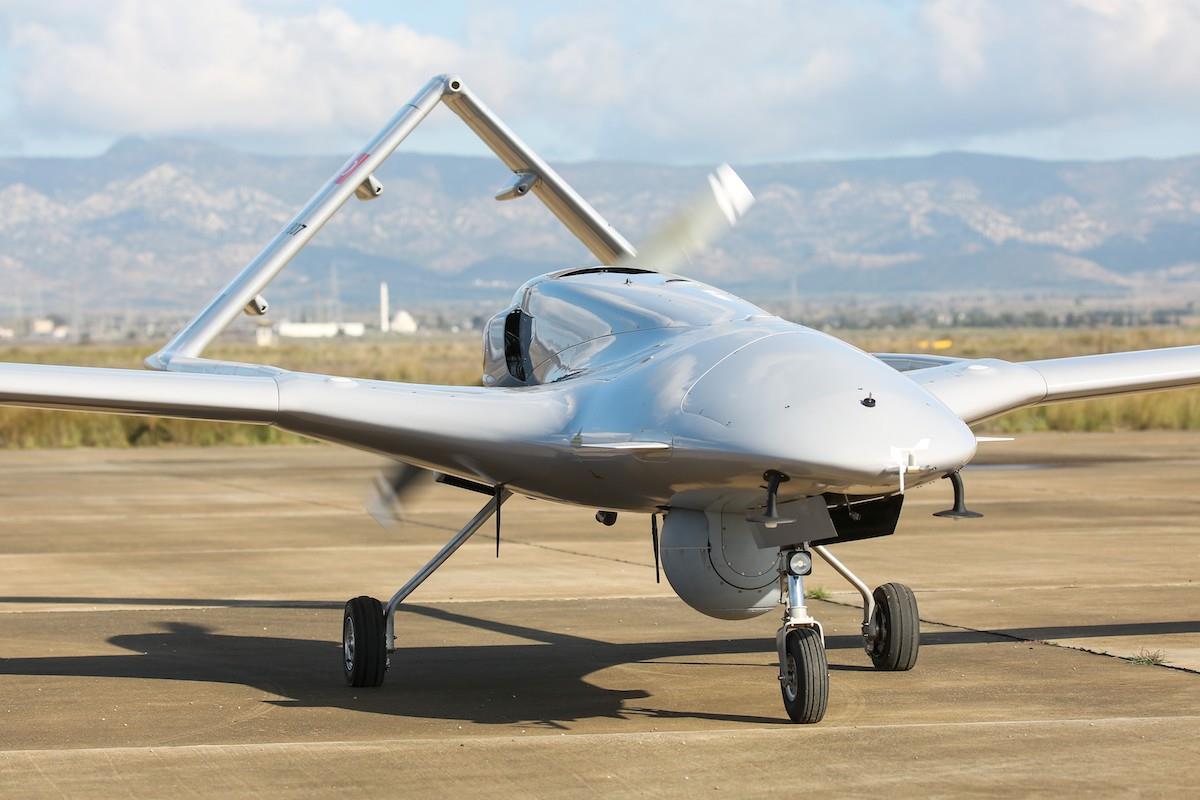(MENAFN- Asia Times)
Taiwan completed long-range flight tests of its indigenous Teng Yun 2 drone this month, marking an important step in its efforts to harden its own defenses and achieve self-sufficiency in producing weapons.
The drone took off from Chiashan Air Base in Hualien and flew over the sea for nearly three hours. This contrasts with previous tests conducted near the coast due to safety reasons and limited capabilities.
The test flight validated Taiwan's advancements in drone command and control, as all communications equipment must work flawlessly during prolonged flights over the open sea. The tests also verified the performance of the drone's optical equipment and surveillance capabilities.
The Teng Yun 2 was developed by the National Chung Shan Institute of Science and Technology in 2016. It resembles the US MQ-1 Predator and can use the same AGM-114 Hellfire missiles used by the latter.
Taiwan plans to start combat tests with the drone next month and form a combat squadron with its four MQ-9B Sea Guardian drones purchased from the US in 2020.
The test unit is an upgraded version of a first-generation drone that crashed during flight testing in February last year. Among the test unit's upgrades are a US-made engine, enhanced thrust, greater range, more payloads, an enhanced flight control system and a triple-backup power system.
Aside from the Teng Yun 2, the Chungshan Institute has developed four other drones. These include the Albatross 2 and Cardinal 2 surveillance and reconnaissance drones, with a range of 180 kilometers and 50 kilometers respectively.
The other two drones, the Teng Yun and Chien Hsiang, are loitering munitions designed for kamikaze attacks against ground targets.

Turkey's military drone, the Bayraktar TB2, has a proven track record in Syria, Nagorno-Karabakh and Ukraine. Photo: AFP / Muhammed Enes Yildirim / Anadolu Agency
The success of Turkey's Bayraktar drones in Ukraine pushed Taiwanese President Tsai Ing-Wen to emphasize the development of Taiwan's indigenous combat drones.
“Regardless of whether it is for military or civilian use, it is highly necessary for us to speed up our development of drones as it will be an important matter for the next generation,” she said in a statement last month.
The development of the Teng Yun 2 and other drones is in line with supporting Taiwan's porcupine strategy , which entails having many small assets that are highly survivable and lethal on the battlefield.
This involves the use of numerous distributed, mobile and affordable anti-air and anti-ship defenses that could be deployed in sufficiently large numbers that would survive China's initial air and missile attacks and would be available to defend Taiwan.
Such a strategy would require Taiwan to be self-sufficient and produce these critical weapons.
While Taiwan has traditionally relied on US weapons for its defense needs, these purchases have been criticized by the KMT as overpriced or for less advanced or obsolete weapons systems. It added that US defense contractors work only for profit and do not care about Taiwan's real defense needs.
This month, Taiwan said it would be dropping plans to buy 12 US-made MH-60R anti-submarine helicopters , with Taiwan's Defense Minister Chiu Kuo Cheng stating that the prices were too high and beyond the scope of Taiwan's capability.
Moreover, the war in Ukraine has strained US supply chains in providing weapons for Taiwan. This month, Taiwan announced a years-long delay for the delivery of 40 M109A6 Paladin self-propelled howitzers, pushing back the delivery date from 2023 to 2026.
In addition, the Taiwan Defense Ministry announced that a shipment of Stinger anti-aircraft missiles may be delayed until 2026.
Self-propelled howitzers and man-portable air defense systems are in high demand by the Ukrainian army for counter-battery fire purposes and low-level air defense, potentially leaving few of these weapons for the US to spare for Taiwan.
Also, the high demand for these weapons has raised concerns from US lawmakers that the US might end up not having enough of them for its own needs. The result is that weapons shipments to Taiwan may be pushed down the list of US priorities, as the latter may opt to fulfill its own military requirements and those of Ukraine before Taiwan.
Taiwan is faced with a sense of urgency to develop its indigenous defense industry to implement its porcupine strategy and reduce its reliance on US arms shipments.
This March, Taiwan announced it would double its missile production capability from 207 to 497 rounds per year, focusing on the Tien Kung surface-to-air missile, the Tien Chien air-to-air missile, the Wan Chien air-launched cruise missile and the Hsiung Feng anti-ship missile.

A Tien Chien I missile on display outside the Chengkungling History Museum in Taiwan. Photo: WikiCommons
In addition to missiles, Taiwan is planning to start manufacturing its own attack drones, with a production rate of 48 units per year.
Unmanned systems play a key role in Taiwan's Overall Defense Concept , the country's strategy for dealing with a potential Chinese invasion in a resource-constrained environment.
It aims to thwart a Chinese invasion and attempts to exert political control over Taiwan by embracing an asymmetric defense posture and incorporating tactical asymmetric capabilities.
Under this strategy, unmanned systems such as the Teng Yun 2 and other models will significantly augment Taiwan's target acquisition, early-warning and tactical reconnaissance capabilities.
These drones could be deployed to monitor target activities on the battlefield and create an asymmetric advantage.
MENAFN19052022000159011032ID1104238696
Legal Disclaimer:
MENAFN provides the information “as is” without warranty of any kind. We do not accept any responsibility or liability for the accuracy, content, images, videos, licenses, completeness, legality, or reliability of the information contained in this article. If you have any complaints or copyright issues related to this article, kindly contact the provider above.